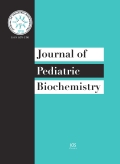Authors: Chauhan, Abha | Gu, Feng | Chauhan, Ved
Article Type:
Research Article
Abstract:
Mitochondrial respiratory electron transport chain (ETC) consists of five multi-subunit enzymes, i.e., complex I-V, which differs not only in structure but also in function, and plays an important role in adenosine triphosphate (ATP) generation by mitochondria. Each of these complexes participates in the generation of proton gradient in the mitochondrial intermembrane space, which is necessary for converting adenosine diphosphate (ADP) into ATP by ATP synthase. Brain has a high demand for energy, and neurons
…generate energy in the form of ATP through the respiratory chain in the mitochondria. Almost 90% of this energy is provided by mitochondrial ETC. ETC also generates most of the endogenous free radicals, i.e., reactive oxygen species (ROS) of the cell. The normal functions of ETC are essential to maintain physiological function and plasticity of neurons. Therefore, abnormalities in ETC during development, i.e., in utero, infancy and childhood, may be involved in the etiology of neurodevelopmental disorders. The abnormalities in mitochondrial ETC pertaining to neurodevelopmental disorders include mtDNA mutations, altered gene expression, decreased activities and protein expression levels of ETC complexes, and oxidative stress. Here, we review these mitochondrial ETC defects in autism spectrum disorders (ASDs) and other neurodevelopmental disorders, i.e., attention deficit hyperactivity disorder, schizophrenia, Down syndrome and Fragile X syndrome.
Show more
Keywords: Autism, attention deficit hyperactivity disorder, Down syndrome, electron transport chain, Fragile X syndrome, mitochondria, neurodevelopment, oxidative stress, schizophrenia
DOI: 10.3233/JPB-120063
Citation: Journal of Pediatric Biochemistry,
vol. 2, no. 4, pp. 213-223, 2012





